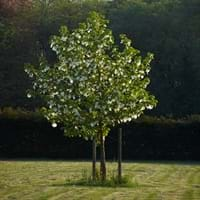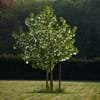Life Span
Perennial
Perennial
Types
Not Availablle
Not Available
Habitat
Open Forest
Scrubs, tussock grasslands, Upland savannas
USDA Hardiness Zone
6-9
10-11
Sunset Zone
4, 5, 6, 7, 8, 9, 14, 15, 16, 17, 18, 19, 20, 21
8, 9, 12, 13, 14, 15, 16, 17, 18, 19, 20, 21, 22, 23, 24
Habit
Oval or Rounded
Upright/Erect
Flower Color
White
Lemon yellow
Flower Color Modifier
Bicolor
Bicolor
Fruit Color
Green, Purple
Gray Green
Leaf Color in Spring
Green
Blue Green
Leaf Color in Summer
Green
Blue Green
Leaf Color in Fall
Yellow, Green, Yellow green
Blue Green
Leaf Color in Winter
Not Available
Blue Green
Leaf Shape
Heart-shaped
Long Narrow
Plant Season
Spring, Summer, Fall, Winter
Spring
Sunlight
Full Sun, Partial Sun
Full Sun
Type of Soil
Loam
Loam, Sand
The pH of Soil
Acidic, Neutral
Acidic, Neutral, Alkaline
Soil Drainage
Average
Well drained
Bloom Time
Spring, Late Spring
Spring, Late Winter
Tolerances
Not Available
Drought
Where to Plant?
Ground
Ground
How to Plant?
Grafting, Seedlings
Seedlings
Plant Maintenance
Medium
Medium
Watering Requirements
Requires watering in the growing season, Water Deeply
Do not water excessively
In Summer
Lots of watering
Lots of watering
In Spring
Moderate
Moderate
In Winter
Average Water
Average Water
Soil pH
Acidic, Neutral
Acidic, Neutral, Alkaline
Soil Type
Loam
Loam, Sand
Soil Drainage Capacity
Well drained
Well drained
Sun Exposure
Full Sun, Partial Sun
Full Sun
Pruning
Prune in early spring, Prune in late winter, Remove damaged leaves, Remove dead branches
Remove dead or diseased plant parts, Requires little pruning
Fertilizers
Compost
All-Purpose Liquid Fertilizer, No fertilizers needed
Pests and Diseases
Canker
Insects, Root rot
Plant Tolerance
Drought
Drought
Flower Petal Number
Single
Single
Foliage Texture
Medium
Fine
Foliage Sheen
Matte
Matte
Attracts
Not Available
Butterflies
Allergy
sneezing
Asthma, Eye irritation, Headache, Nose Irritation, Throat itching, Vomiting
Aesthetic Uses
Beautification, Showy Purposes
Showy Purposes
Beauty Benefits
Not Available
Not Available
Environmental Uses
Air purification, Nesting sites for birds, Prevent Soil Erosion, Shelter for wildlife, Very little waste
Air purification, soil stabilisation
Medicinal Uses
No Medicinal Use
Not Available
Part of Plant Used
Flowers
Flowers, Sap, Seeds
Other Uses
Decoration Purposes, Showy Purposes, Used as Ornamental plant
Used as a dye, Wood is used fore making tools
Used As Indoor Plant
No
No
Used As Outdoor Plant
Yes
Yes
Garden Design
Feature Plant, Shade Trees
Shade Trees, Street Trees
Botanical Name
DAVIDIA
ACACIA aneura
Common Name
Davidia
Mulga, True Mulga
In Portuguese
Davidia
Mulga
Phylum
Tracheophyta
Magnoliophyta
Class
Magnoliopsida
Magnoliopsida
Family
Nyssaceae
Fabaceae
Clade
Angiosperms, Asterids, Eudicots
Angiosperms, Eudicots, Rosids
Tribe
Astereae
Not Available
Subfamily
Davidioideae
Not Available
Number of Species
Not Available
Not Available
Properties of Davidia and Mulga Tree
Wondering what are the properties of Davidia and Mulga Tree? We provide you with everything About Davidia and Mulga Tree. Davidia doesn't have thorns and Mulga Tree doesn't have thorns. Also Davidia does not have fragrant flowers. Davidia has allergic reactions like sneezing and Mulga Tree has allergic reactions like sneezing. Compare all the properties and characteristics of these two plants. Find out which of these plant can be used as indoor plant. If you are interested to decorate your house and garden, find out aesthetic uses, compare them and select the plant which will beautify your surrounding. Along with beautification, try comparing medicinal and edible uses of Davidia and Mulga Tree and you can choose the plant having best and most benefits.
Season and Care of Davidia and Mulga Tree
Season and care of Davidia and Mulga Tree is important to know. While considering everything about Davidia and Mulga Tree Care, growing season is an essential factor. Davidia season is Spring, Summer, Fall and Winter and Mulga Tree season is Spring, Summer, Fall and Winter. The type of soil for Davidia is Loam and for Mulga Tree is Loam, Sand while the PH of soil for Davidia is Acidic, Neutral and for Mulga Tree is Acidic, Neutral, Alkaline.
Davidia and Mulga Tree Physical Information
Davidia and Mulga Tree physical information is very important for comparison. Davidia height is 910.00 cm and width 610.00 cm whereas Mulga Tree height is 550.00 cm and width 370.00 cm. The color specification of Davidia and Mulga Tree are as follows:
Davidia flower color: White
Davidia leaf color: Green
Mulga Tree flower color: Lemon yellow
- Mulga Tree leaf color: Blue Green
Care of Davidia and Mulga Tree
Care of Davidia and Mulga Tree include pruning, fertilizers, watering etc. Davidia pruning is done Prune in early spring, Prune in late winter, Remove damaged leaves and Remove dead branches and Mulga Tree pruning is done Remove dead or diseased plant parts and Requires little pruning. In summer Davidia needs Lots of watering and in winter, it needs Average Water. Whereas, in summer Mulga Tree needs Lots of watering and in winter, it needs Average Water.





